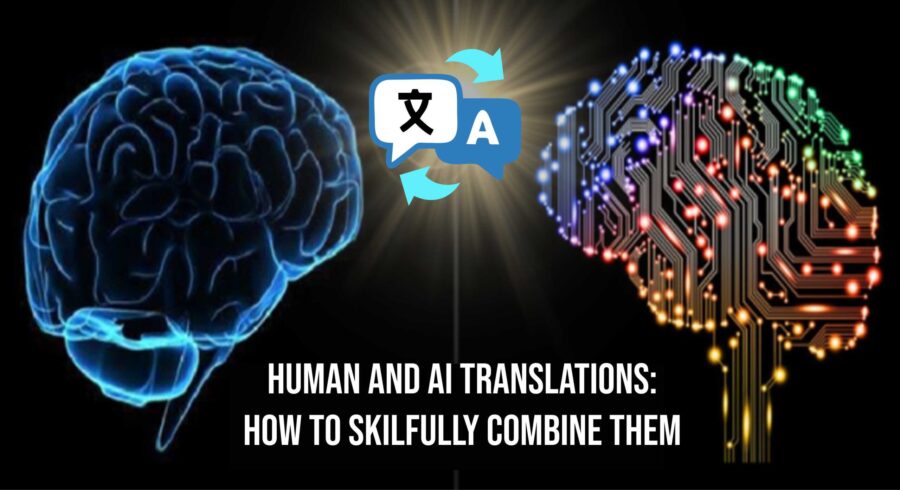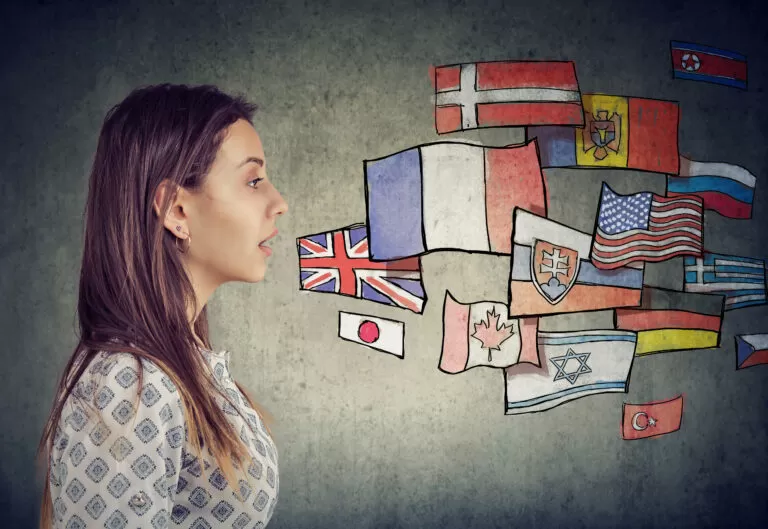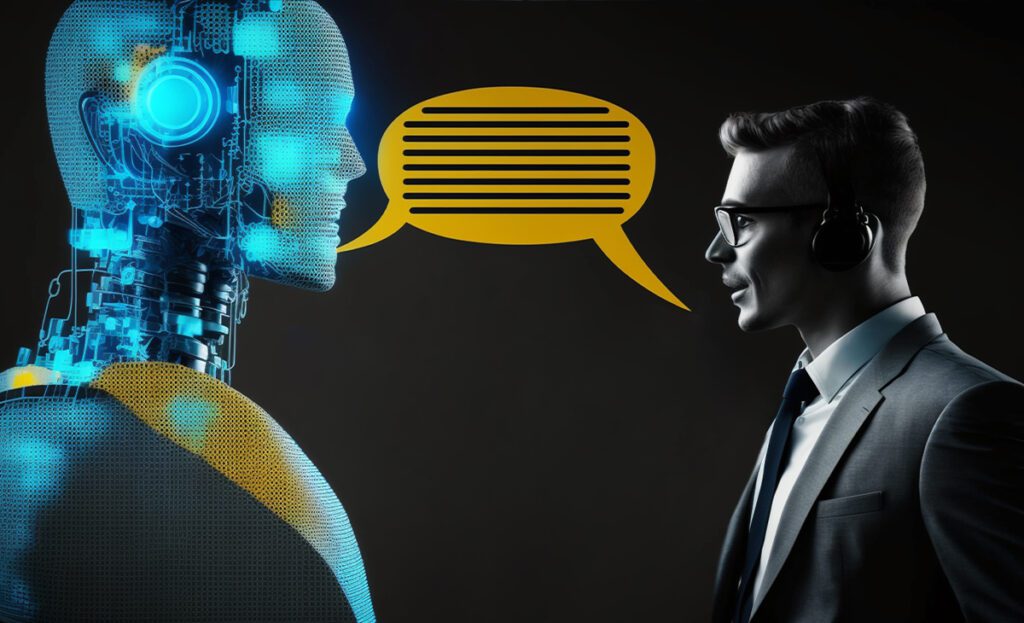
In today’s fast-paced world, technology is constantly pushing the boundaries of content translation. The question of whether to rely on AI or human translation services has sparked a lively debate. However, rather than viewing it as an “either-or” situation, a more effective approach is to combine the strengths of both. By leveraging the power of artificial intelligence alongside human expertise, we can enhance translation quality while reducing manual effort. Let’s explore the exciting possibilities that arise from this hybrid approach.
The gains and losses of AI translation tools and human translation services
When comparing machine translation and human translation, it’s essential to consider the advantages and disadvantages of each approach. Let’s delve into the pros and cons of both to determine which option best suits your translation project.
Machine translation advantages
Accuracy
Machine translation systems leverage sophisticated algorithms and machine learning to achieve impressive accuracy levels. They can swiftly process large volumes of text, ensuring consistency and reducing the risk of human error.
Efficiency
Machine translation enables fast turnaround times, making it ideal for time-sensitive projects. The automated nature of AI allows for quick and streamlined translations, saving valuable time and resources.
Cost-effectiveness
With machine translation, the need for manual labor is significantly reduced, leading to cost savings for businesses. It eliminates the need to hire human translators for every project, making it a more affordable option for large-scale translations.
Machine translation disadvantages
Contextual understanding
While AI excels at processing vast amounts of data, it can need help with understanding nuanced contexts and cultural subtleties. It may miss idiomatic expressions, context-specific meanings, and cultural references, resulting in less nuanced translations.
Lack of creativity
Machine translation systems rely on predetermined patterns and algorithms, limiting their ability to provide creative adaptations. Translations produced by AI translation tools may need more artistic touch and finesse that humans bring to the table.
Constant updates
Machine translation models require continuous updates to keep up with evolving languages, terminologies, and linguistic nuances. Staying up-to-date with the updates required for AI translation tools can be a time-consuming process.

Advantages of using human translators
Linguistic expertise
A human translator deeply understands language nuances, idiomatic expressions, and cultural contexts. They can capture the intended meaning accurately, ensuring high-quality translations that resonate with the target audience.
Cultural sensitivity
Professional translators are well-versed in the cultural aspects of both the source and target languages. A human translator can navigate cultural nuances, adapt the content appropriately, and ensure that the translated material respects cultural sensitivities.
Creative adaptability
A Human translator can bring creativity and adaptability to the translation process, which neural machine translation tools cannot do. Professionals performing human translations can creatively rephrase and convey messages conveyed in written or spoken words, capturing the original content’s tone, style, and voice.
Disadvantages of using human translators
Time-consuming
Human translation is a labor-intensive process that takes time, especially for large projects. The manual effort involved in translating each word and sentence can result in longer turnaround times.
Cost
Hiring human translators can be more expensive, particularly for extensive or ongoing translation needs. The need for skilled professionals adds to the overall project cost.
Subjectivity
Human translations are inherently subjective, as different translators may have varying interpretations and styles. Achieving consistent translations across multiple projects and translators can be challenging.
While exploring the pros and cons of machine translation versus human translation, it is essential to consider the broader scope of language services. Interpreting, for instance, plays a crucial role in facilitating real-time communication. The essential guide to interpreting explains the various modes of interpretation, such as consecutive and simultaneous interpreting, and provides insights into best practices and industry standards.
By considering these pros and cons, you can decide whether to opt for AI translation, human translation, or a hybrid approach that combines the strengths of both methods.

Embracing a hybrid approach: combining AI and human translation
Rather than choosing between AI translation and human translation, a compelling alternative is to embrace a hybrid approach that combines the strengths of both methods. This approach recognizes the value of AI technology in terms of speed, efficiency, and cost-effectiveness, while acknowledging the unique expertise and creative adaptability that human translators bring.
In a hybrid model, AI translation is the foundation, leveraging its ability to process large volumes of text and swiftly generate initial translations. This saves valuable time and resources, especially for projects with tight deadlines. The AI system provides a solid translation starting point, ensuring consistency and accuracy.
However, human translators play a vital role in refining and enhancing these initial AI-generated translations. They possess the linguistic expertise and cultural sensitivity required to understand subtle nuances, idiomatic expressions, and contextual complexities. Human translators can ensure that the translated content captures the intended meaning accurately and resonates with the target audience.
Taking a balanced approach, rather than viewing AI translation and human translation as opposing forces, provides a deeper understanding of how much more effective the translation process can be. Translation is fundamentally about managing information, and when dealing with transferring information from one language to another, maximizing productivity becomes paramount.
Quality assurance in hybrid translation: ensuring accurate and refined translations
In hybrid translation projects combining AI and human expertise, quality assurance is critical in delivering accurate and refined translations. While AI technology provides a strong foundation, it is the human touch that fine-tunes and polishes the translations to ensure the highest level of quality. Several strategies and methodologies are employed to maintain rigorous quality control throughout the process.
Proofreading
Proofreading is a fundamental step in quality assurance. Human proofreaders meticulously review the translated content, comparing it with the source text to identify any errors or discrepancies. They focus on grammar, syntax, punctuation, and spelling, ensuring that the final translation adheres to linguistic conventions and is error-free. This human intervention helps catch any inaccuracies that may have been overlooked by the AI translation system.
Editing
Editing is another vital aspect of quality assurance in hybrid translation. Human editors scrutinize the translated text to enhance its clarity, coherence, and readability. They refine sentence structures, adjust word choices, and ensure that the message remains faithful to the source while flowing naturally in the target language. Editors also pay attention to cultural appropriateness, ensuring that the translations align with the norms and sensitivities of the target audience.
Human review
Human review serves as the final quality control checkpoint. Expert linguists with subject matter expertise assess the translations for accuracy, context, and technical precision. They verify that the translated content conveys the intended meaning, captures the nuances of the source text, and remains consistent throughout. This human review ensures that the translations are linguistically accurate, contextually appropriate, and relevant.
In short, quality assurance is a critical pillar in hybrid translation projects. The combination of proofreading, editing, and human review ensures that the AI-generated translations are refined, accurate, and aligned with the desired quality standards. By leveraging the strengths of both AI technology and human expertise, businesses can confidently deliver translations that resonate with their target audience while maintaining linguistic accuracy and precision.
Final thoughts
In the evolving landscape of translation, the hybrid approach that combines AI and human translation emerges as a compelling solution. By harnessing the strengths of both methods, businesses can achieve accurate, refined, and culturally relevant translations while maximizing efficiency and productivity.
Integrating AI technology in translation offers speed, scalability, and cost-effectiveness. AI is a powerful tool for processing large volumes of text and generating initial translations. However, the human touch is indispensable in ensuring linguistic accuracy, cultural sensitivity, and contextual understanding.
Through proofreading, editing, and human review, the hybrid approach refines AI-generated translations, addressing residual errors and enhancing the overall quality. Collaboration and feedback loops between AI systems and human translators contribute to continuous improvement, refining the underlying algorithms and increasing the accuracy of future translations.
As the translation industry advances, the hybrid approach will continue to evolve and adapt. According to the ultimate guide to localization, companies are embracing advanced translation techniques to cater to global audiences and achieve seamless communication across borders. The seamless integration of AI and human translation promises improved efficiency, accuracy, and cultural adaptation. By embracing this hybrid model, businesses can confidently communicate with their global audience, expanding their reach and establishing meaningful connections.
